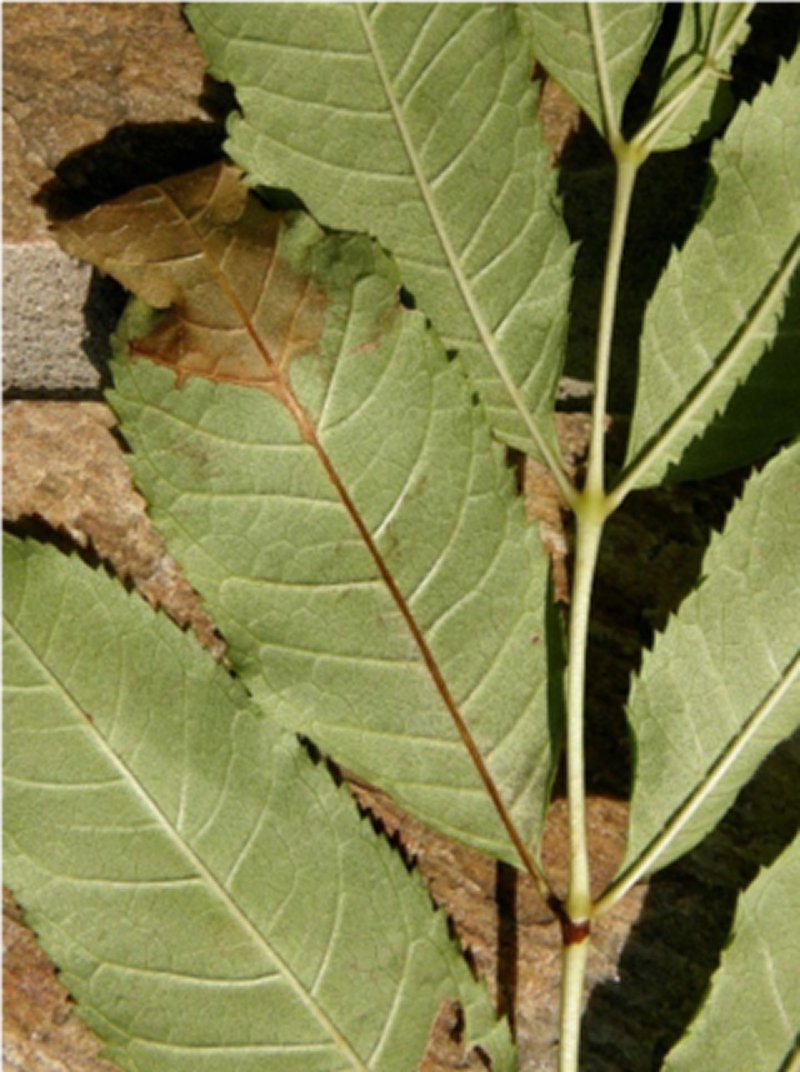
Ash dieback found on new species of tree
Chalara was first discovered in the UK in 2012, having been brought into the country with a consignment of Ash trees from the Netherlands. The disease is well established throughout mainland Europe, where it is responsible for significant losses of commercial and amenity tree planting.
Spread by a fungus called Hymenoscyphus fraxineus, the disease is often simply referred to as ‘ash dieback’ due to the symptoms on infected trees: leaf loss, crown dieback and bark lesions.
Sadly, once infected, trees are likely to die either as a direct result of the disease or will succumb to other diseases to which the plant is more vulnerable. Weakened specimens are particularly vulnerable to attack from Honey fungus, for example.
Since its introduction, ash dieback has now spread throughout the UK and Ireland, and was even discovered on the Isle of Man in 2017. Together with FERA, the Forestry commission has developed mapping software that provides up-to-date details of where the disease has spread (for link please see ‘Useful information sources’, below.
The aggressive spread of ash dieback in both the UK and Europe has resulted in measures being taken by the UK government to reduce the impact of the disease as much as possible. At present, all imports of ash plants, trees and seeds into Great Britain are banned, together with the movement of plant-passported material within the country.
Up until now, it was believed Chalara dieback of ash focussed primarily on the common or European ash (Fraxinus excelsior), and to a lesser extent, narrow-leaved ash (Fraxinus angustifolia). However, the Forestry Commission has now confirmed it has identified ash dieback on three new tree and shrub species in the same family (Oleaceae), including mock privet, narrow-leaved mock privet and white fringetree.
All three susceptible trees and shrubs are ornamental, not native to the UK and were found near to infected common ash trees. As a result, any impact on the environment in the UK is likely to be limited at this stage.
The significance of this finding, however, is the possibility that Hymenoscyphus fraxineus may target other species within the Oleaceae family. Luckily, recent tests on Osmanthus and Lilac have confirmed they are not susceptible, and tests on other plants are ongoing.
What do BALI members need to do?
The Forestry Commission has requested the industry remains vigilant for signs of ash dieback on these new tree and shrub species, and report suspected sightings through its ‘Tree Alert’ reporting system.
What do I look out for?
Symptoms of Hymenoscyphus fraxineus include the following:
- Leaf loss
- Crown dieback
- Bark lesions
Where do I report suspected sightings?
All sightings should be reported to the following website: https://treealert.forestry.gov.uk/index.php/report?line=chalara
Useful information sources
Forestry Commission resource page: https://www.forestry.gov.uk/ashdieback
Chalara distribution map (UK): http://chalaramap.fera.defra.gov.uk/
Tree alert reporting system: https://www.forestry.gov.uk/treealert
